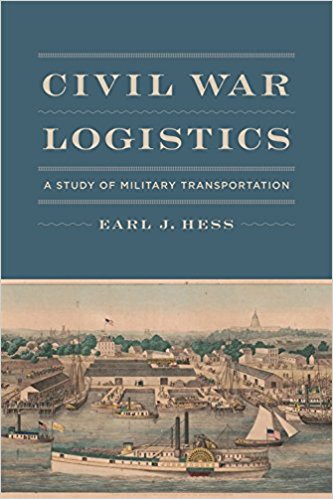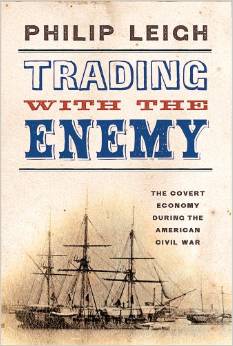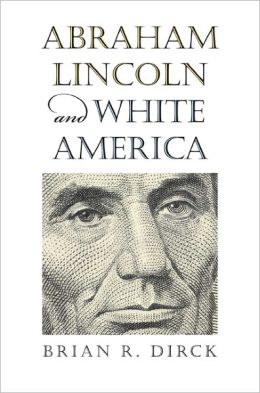Civil War Logistics: A Study of Civil War Transportation by Earl J. Hess. Louisiana State University Press, 2017. Cloth, IBSN: 978-0807167502. $45.95.
 Earl Hess is a Civil War Renaissance man. In a career spanning decades, he has written with insight, confidence, clarity, and elegance on topics ranging from a revisionist biography of Braxton Bragg to living conditions in the trenches around Petersburg. Civil War scholars and military historians in general are indebted to him for the many contributions he has made to enrich the historiography of the Civil War era.
Earl Hess is a Civil War Renaissance man. In a career spanning decades, he has written with insight, confidence, clarity, and elegance on topics ranging from a revisionist biography of Braxton Bragg to living conditions in the trenches around Petersburg. Civil War scholars and military historians in general are indebted to him for the many contributions he has made to enrich the historiography of the Civil War era.
Hess’ latest foray plunges the reader into the critical but woefully under appreciated world of Civil War logistics, which he defines as “the transportation men, material, food, and animals in support of military operations in the field.” He wisely separates the transportation aspect of military operations from the issues surrounding the supplying an army. Procuring food and other material needed by troops in the field and issuing to them in a timely fashion, Hess concludes, “requires a separate study of its own.”
Hess identifies three primary strategic systems of transportation used by both Union and Confederate armies throughout the war and devotes a chapter to each. River-based transport, consisting primarily of civilian-owned steamboats and other brown-water craft, was of critical importance in the Western theater. There, the Union effectively used the rivers as highways penetrating deep into the Confederate heartland. Likewise, the Union used blue water coastal shipping, both sail and steam powered, to move men and material over long distances to enclaves captured and held by Federal forces along both the Atlantic and Gulf coasts. Finally, Hess rightly posits that the Civil War was the world’s first railroad war. In 1860, America had more track mileage than any other country, and both sides used its speed and cost effectiveness to move men and material to the battlefield. The fourth major system of transport was tactical and as old as organized warfare itself. Wagon trains, pack trains, and humans carrying supplies on their backs were the last segment in the logistical system and operated almost entirely within the theater of operations of each army.
Hess’ study relies heavily on data drawn from the Union armies because Confederate records are sparse and the South’s logistical systems, across the board, were less extensive and far inferior to those of its Northern foe. Tellingly, Hess maintains that Confederates “did not make good use of what access they had” to each of the logistics systems that were available. In many instances, Confederate armies did not lack the resources to wage effective campaigns, but suffered consistently from the inability—often due to an inefficient logistical bureaucracy centered in Richmond, instead of with the armies themselves—to move men and material in a timely manner. “It is perhaps in this joining of major transportation systems,” Hess asserts, “that the Northern logistical effort achieved its greatest triumph, a success never really seen before.”
As befitting an examination of logistical systems, some of the numbers Hess presents are truly staggering. During the course of the war, the Union Quartermaster Department managed more than $600 million worth of transactions; $240 million went to transportation costs alone. From July 1864 to June 1865, almost a quarter of a million tons of supplies and 283,716 men in more than 29,000 cars left the Union supply hub in Nashville by rail for various destinations. Hess concludes that, “The Army of the Potomac needed just over 3,000 wagons, 350 ambulances, 17,000 horses, and 8,000 mules on a consistent basis to support its operations.” One hundred and fifty wagons were needed just to feed that army on a daily basis. William Tecumseh Sherman, who Hess credits with being a master quartermaster himself, believed each of his corps “required 600 wagons to haul what was needed for a march of 20 days away from sources of supply.”
Managing such an immense logistical system generated immense amounts of paperwork. For the Union, Montgomery Meigs and his officers collected, examined, and processed 40,000 quarterly statements every year from company level quartermasters, an additional 12,000 accounts and returns from regimental quartermasters, and 3,600 monthly statements from brigade quartermasters. The paperwork “largely revolved around vouchers and receipts, which had to be examined by clerks before submission to the secretary of war, who passed them on to the Treasury Department for payment.”
The Civil War produced its share of unsung heroes, and one need look no further than the Union Quartermaster Corps to find many of them. Captain James F. Rusling, quartermaster of the Third Corps in the Army of the Potomac, concluded a great quartermaster “must be a man of brains” and is expected to be “sufficient unto himself and to make good the deficiencies of everybody else.” Major General William S. Rosecrans looked for “a business quartermaster” to manage his supply depot in Nashville. “Orders and instructions are not the things,” Rosecrans told Meigs. “Power and energy, with systems and business capacity, are what is now wanted.” Rufus J. Ingalls, chief quartermaster of the Army of the Potomac for most of the war, embodied all of those characteristics. So did Robert Allen, located in St. Louis and Louisville. By the end of the war, Allen had risen from major to brevet major general without seeing a day of field of duty during the entire war.
The Confederate government created a Quartermaster Department in February 1861 with Lt. Col. Abraham C. Myers as Quartermaster General. In August 1863, Brig. Gen. Alexander R. Lawton succeeded him. Hess indicts rebel officers because, as a rule, “they were terrible record keepers.” Indeed, Hess maintains there was “an administrative malaise centered in Richmond” and the overall failure of the Confederate quartermaster system was reflective of “a general breakdown of a governmental system that could only be described as weak even on its best days.”
Hess devotes several entertaining chapters on attempts mounted by both sides to interdict various transportation systems. Overall, these efforts rarely went beyond “merely inconveniencing the enemy.” Hess explains that “Confederate authorities were limited in the number of men and resources they could afford to send on risky ventures behind Union lines, and Federal authorities gradually invested a great deal of their available resources in defending important lines of communication.” The Federals “won the struggle to see which side could achieve more success in destroying their opponent’s logistics,” Hess concludes, “and that was an important factor in their winning the war.”
Gordon Berg’s articles and reviews have appeared in many Civil War periodicals. He writes from Gaithersburg, Maryland.



